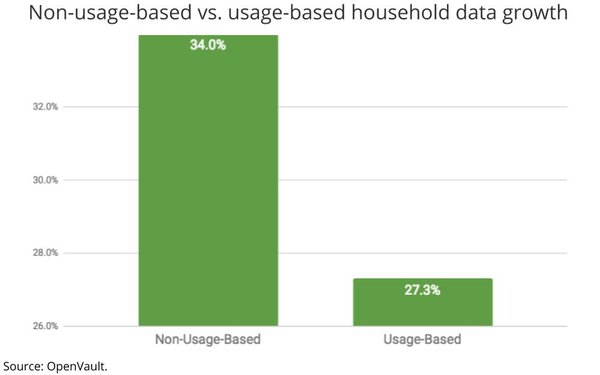
Earlier this year,
MediaPost’s Research Intelligencer reported on PricewaterhouseCoopers’ estimates indicating
that the U.S. media marketplace continues to evolve from a content and distribution model into a bandwidth economy. The PwC analysis suggested it was being driven by “robust competition among
the leading mobile providers,” but estimates released this morning by the broadband data analysts at OpenVault suggest the evolution is accelerating even faster in the non-mobile universe. You
know, those fat pipes coming into broadband households.
According to OpenVault’s second quarter estimates, the volume of data consumption per average U.S. broadband household
has grown by nearly a third (31.3%) year-over-year.
advertisement
advertisement
The report also shows that the percentage of U.S. households classified as “power users” -- those 1 terabyte or more
of broadband data -- has more than doubled in the past year to 2.5% from 1.2% in the second quarter of 2017.
The expansion isn’t just an indication that Americans are becoming
data hogs, but is further evidence of changing media consumption patterns, especially the shift from linear TV to streaming services inside the household.
It’s also further
evidence that cable and telco providers increasingly are becoming “dumb
pipes” vs. programming services providers. But they’re not-so-dumb when it comes to how they market their bandwidth.
The OpenVault analysis also shows providers and
the households they serve are shifting from flat usage rates to usage-based billing that is generating incremental revenues for providers as data consumption expands per household.
The report also indicates that household data consumption is not price elastic, because data consumption in households still using flat-rate pricing grew at a faster rate than those with
usage-based billing: 34.0% vs. 27.3%.
